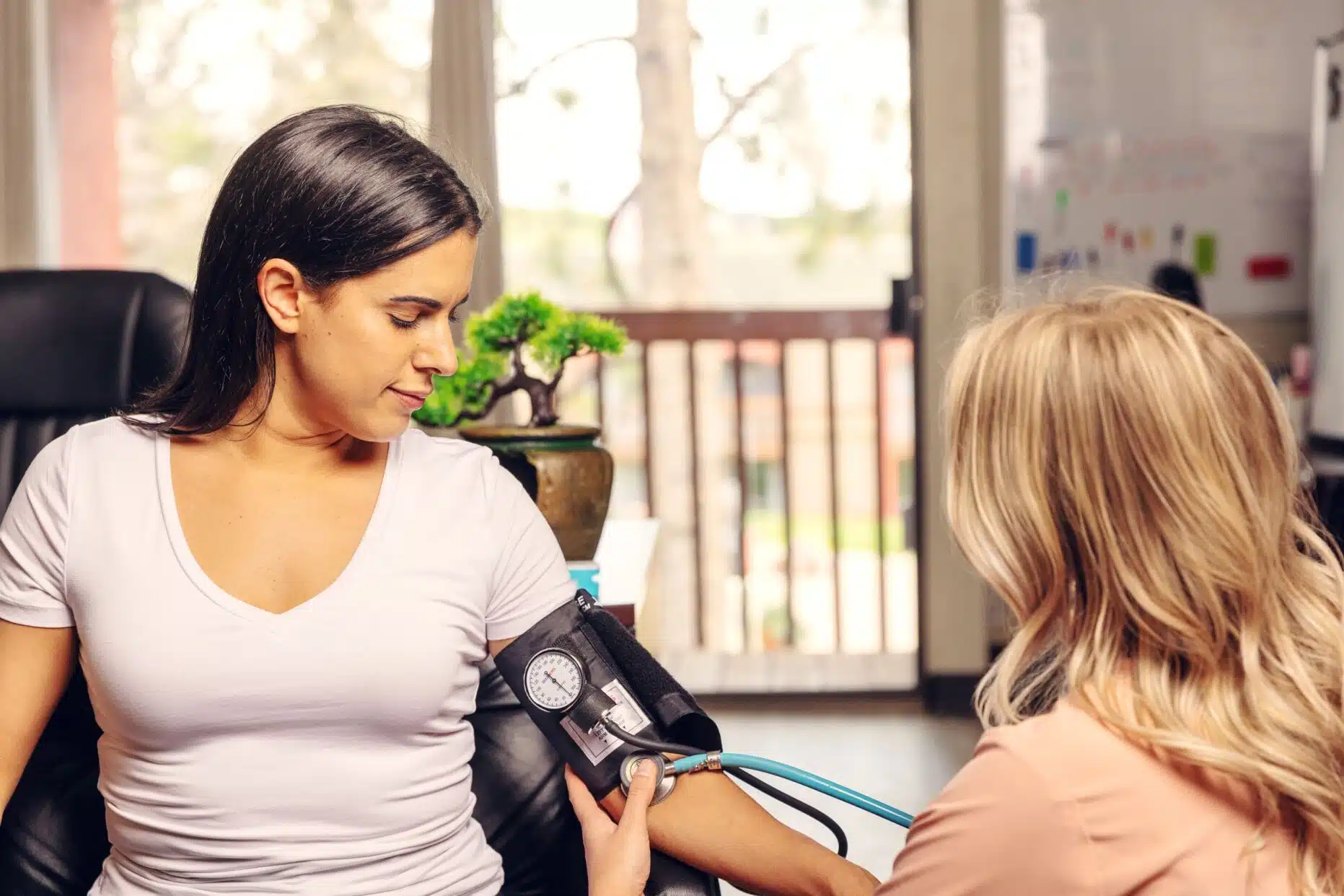Dilaudid is a type of opioid for managing moderate to severe pain. Its generic name is hydromorphone, a substance that causes the brain to have a different response to pain and discomfort. How does one develop a Dilaudid addiction? What are the ways to get treatment? Read to know more.
Dilaudid is a type of drug used to treat excessive pain. Often used as a post-surgery medication, treatment from migraine, or relief from pain caused by cancer, Dilaudid (hydromorphone) brings a fast-acting solution even with a small dosage. This substance can be taken as pills or through a Dilaudid injection.
Is Dilaudid Addictive?
This is a common question asked by hydromorphone users. As previously mentioned, Dilaudid belongs to the class of opioids, which are types of substances that change how the brain responds to pain. This continuous alteration of brain response can bring drug tolerance and dependence.
Aside from pain relief, there are also various side effects that may cause an addiction to Dilaudid. These side effects occur when the drug is not taken, which can often feel unpleasant. Thus, a Dilaudid dependence develops.
Drug-related factors are one thing, but there are also individual-related factors that can contribute to an addiction problem. Some of these include the following:
- Genetic makeup: Research shows that there are some people who are more susceptible to drug abuse. Their brains are inclined to quickly integrate the substances in the body, forming a dependence.
- Gender: Men have an increased likelihood of developing a Dilaudid addiction problem, but women are known to develop a drug habit faster than their male counterparts.
- Severity of condition: Opioids are prescribed as a pain medication. People who experience severe pain may be prone to drug abuse, as they can be tempted to take more than the prescribed amount.
- External factors: Life stressors, presence of enablers, and triggers can cause a person to misuse Dilaudid as well.
With all the factors mentioned above, Dilaudid is potentially addictive when used long-term. It is best to follow prescription guidelines when taking this substance.
Signs of Dilaudid Use
Understanding Dilaudid addiction symptoms is important to prevent life-threatening complications. If you or a loved one is taking this substance, you may want to watch out for these particular indicators of an addiction:
Constantly thinking of the next dose
Having all-consuming thoughts about having a Dilaudid pill or a Dilaudid IV is a possible sign of addiction. It is normal to remind yourself of your next dosage for the day. However, if you find yourself becoming obsessed thinking about how the drug makes you feel and when you can take it again, this is a potential red flag.
Increasing dosages than the prescribed amount
Dilaudid is usually prescribed in 2mg or 4mg dosages. If you have developed a Dilaudid tolerance, you end up taking more than what is written in your prescription or drinking it more frequently as you should. Many Dilaudid prescriptions have set amount of days for intake. You may also find yourself forging doctor’s orders to prolong your use.
Financial problems related to drug use
Dilaudid is a prescribed medication, which requires you to have doctor visits and prescriptions before getting the drug. You may find yourself running out of money by hopping from one doctor clinic to another just to get prescriptions for Dilaudid. Additionally, purchasing the drug in other sources without prescription is a potential sign of Dilaudid addiction.
Loss of interest in daily activities
Forming a Dilaudid dependence can also mean losing balance with your life responsibilities. Taking more leaves at work, being absent in school, leaving the house unkempt, or failing to respond to your loved one’s needs whereas you’ve fulfilled before could indicate that you are developing an addiction to the drug.
Looking and stealing from medicine cabinets
Have you ever found yourself looking at friends’ or families’ medicine cabinets for Dilaudid? This is another sign of a drug addiction. When you go out of your way to do something you know isn’t typical of you prior to drug use, it is likely that you are addicted to this medication.
Physical, mental, and emotional changes from using the drug
After some time, you notice changes in your body’s response with and without Dilaudid. You experience Dilaudid withdrawal, which may include nausea, vomiting, flu-like symptoms, and muscle tremors. Mentally, it is typical to have some form of confusion and memory loss when the drug is not taken. You can also have anxiety, depression, and irritability as an emotional aspect of the withdrawal.
These changes may cause severe discomfort that an individual who attempts to quit Dilaudid end up using it again to find relief.
In relation to the physical, mental, and emotional changes caused by a potential Dilaudid addiction, we will also be discussing how this drug works and the side effects due to long-term abuse.
How Does Dilaudid Work?
Dilaudid works by attaching to certain brain receptors. Once the substance attaches in brain receptors, it signals the body to respond in two ways:
- Pain numbness: As an opioid, Dilaudid provides relief by reducing or eliminating the brain’s perception of pain. The result is numbness in the pain area within minutes of taking the drug.
- Dopamine release: The drug can also trigger the release of dopamine upon its receptor-binding action. Dopamine is a brain chemical known to bring pleasurable feelings.
Some people contemplate on the effectiveness of Dilaudid vs. Morphine. Both are strong medications, but Dilaudid is known to be more potent than Morphine. You would need more doses of Morphine to achieve the same effect in smaller doses of Dilaudid. The body’s reaction to Dilaudid depends on the amount of dosage, mode of intake, and other biological factors. The two bodily responses often reinforce an individual to take the drugs with the purpose of simultaneously experiencing pain relief and a ‘dopamine high’.
However, there are negative side effects related to continued use of Dilaudid. This is especially relevant when the drug is taken more than the prescribed amount
Dilaudid Side Effects
There are varying physical, mental, and emotional side effects in taking this opioid medication. They can be either part of the body’s reactions to drug withdrawal, or biological changes due to drug dependency.
Physical side effects
- Nausea
- Vomiting
- Constipation
- Dry mouth
- Flushing
- Dizziness
- Lightheadedness
- Weak muscles
- Sweating
- Diarrhea
- Stomach pain
- Potential overdose
Mental and emotional side effects
- Confusion
- Unsatisfied feeling
- Depression
- Generalized anxiety
- Sudden mood changes
When taken long-term, the possible complications of Dilaudid include the following:
- Bluish lips or skin
- Color blindness
- Poor coordination
- Decrease in urination
- Skin rashes or hives
- Noisy breathing
- Breathing problems
- Insomnia
- Restlessness
- Potential overdose
Signs Of A Dilaudid Overdose
Side effects of abusing this medication may also lead to Dilaudid overdose. Overdosing on this drug can be fatal because it is a relaxant. The muscle-relaxant properties of this drug can also affect the function of involuntary muscles in the lungs and heart.
- Bluish colored fingernails and toenails
- Breathing problems: Shallow breathing, labored breathing, or slow breathing
- Irregular heartbeat or heart palpitations
- Cold and clammy skin
- Loss of consciousness
- Low blood pressure
- Weak pulse
- Itching
- Fatigue
- Spasms experienced in the stomach and intestines
Dilaudid Addiction Treatment
If you have come to the conclusion that you or a loved one is suffering from a Dilaudid addiction, know that you are not alone. Recovery is possible once you seek professional help right away. In the following sections, you will learn about the various types of rehabilitation and treatment options.
Types of Dilaudid Rehab
There is no single treatment route for Dilaudid addiction. The recommendations provided by medical professionals are based on your unique medical background, life circumstances, and your personal preference.
In Sunshine Behavioral Health centers, there are two main types of rehabilitation provided, based on the severity of your addiction:
- Inpatient rehabilitation: Inpatient rehabilitation consists of a three-part program (Detox, Treatment, and Aftercare) while the patient stays in the facility from 30-90 days. The length of time and the type of treatment provided within the rehabilitation center depends on the results of the evaluation as well as the client’s personal preference.
- Outpatient rehabilitation: Some clients may choose to have outpatient services. These are for patients who have mild to moderate addictions which are deemed to be manageable at home. They can still attend some programs held in the center, but they are not required to stay within the facility. A home treatment plan will be provided for the patient to follow.
What can I expect from an Inpatient Dilaudid Rehabilitation?
Once you decide to undergo inpatient Dilaudid rehab, you will be asked to complete the three phases of treatment:
Dilaudid Withdrawal and Detox
The purpose of Dilaudid detox is to decrease or eliminate the presence of the substance in the body. The patient will be provided with medications, comfortable lodging, and nutritious meals during the process. At this stage, patients are monitored by medical staff to ensure that the effects of Dilaudid withdrawal are safely managed.
It is typical to experience some discomfort during the detox process, as the body adjusting to the sudden loss of substance dependence. Once your body gets rid of hydromorphone in its system, the next step for a successful recovery is the treatment proper.
Dilaudid Addiction Treatment
After undergoing an intensive detox, clients can now proceed to treatment proper. There are many types of treatment options for Dilaudid addiction. Some of the most well-known ones are:
- 12-Step Treatment: A program consisting of 12 Steps, which starts with admitting powerlessness over an addiction and submitting to a Higher Power in order to overcome the problem.
- Dual Diagnosis: A treatment process which targets another medical condition aside from substance use disorder. Commonly, people who undergo dual diagnosis treatment are seeking help for other mental health issues.
- Faith Treatment: This treatment program is ideal for people who want to strengthen their spiritual beliefs. It incorporates faith-based principles in order to overcome problems in addiction.
- Holistic Treatment: The principle behind holistic therapies is viewing the person as a whole. This includes therapies that heal the body, mind, spirit and emotions.
- Non-12 Step Treatment: Non-12 Step treatment or non-faith based treatment includes programs that doesn’t involve spiritual themes. Psychotherapies and counseling are considered non-12 Step options.
- SMART Recovery: SMART stands for Self-Management and Recovery Training. This process is science-based program which includes cognitive behavioral therapy and motivational methods to battle addiction.
Aftercare
After the 1-3 months of inpatient treatment, you will be provided with an aftercare program to ensure the success of addiction recovery. These are a variety of activities and recommendations that you can follow through:
- Counseling: You may continue to attend one-on-one or group counseling sessions to help you stay accountable during recovery.
- Support groups: If you live in an area far from the rehab facility, you may be plugged in a nearby support group that you can attend regularly.
- Fitness and nutrition plan: A crucial part of recovery is making sure that your body stays healthy and physically fit. An exercise and diet plan may be given for you to establish good health habits.
- Therapies: You also have the option to continue other psychotherapies and holistic programs that you started during the treatment process.
- Recreational activities: Our specialists can suggest various recreational activities, hobbies, and sports you can engage in to avoid slipping back to old habits.
If you decide to stay in any Sunshine Behavioral Centers, our addiction specialists will assist you in choosing treatment options and aftercare programs that suit your needs and preferences.
Does Insurance Cover Dilaudid Addiction Treatment?
Perhaps you are wondering if your insurance covers Dilaudid addiction treatment. According to the Mental Health Parity and Addiction Equity Act of 2008, there are insurance groups required by law to cover mental health conditions and substance use disorders at the same level as other illnesses.
This means that being diagnosed with a substance use disorder warrants you the same insurance benefits for doctor evaluations, inpatient treatment and outpatient services.
Paying For Dilaudid Drug Rehab
There are also other ways to pay for Dilaudid drug rehab aside from having a health insurance. This is important to know as some insurance companies may only partially cover your treatment costs. Below are some options you can choose from when paying for addiction treatment:
- Health Insurance: If you are working or self-employed, your health insurance may cover costs of addiction treatment depending on your type of plan.
- Sponsorships: Being open with your addiction treatment is a choice. One benefit of sharing this to selected people is a chance to get a sponsorship for your Dilaudid rehab costs. Your employer, a concerned advocate, or private companies can sponsor your addiction treatment.
- Family and friends: You need your family and trusted friends as support during your addiction treatment and recovery. One of the ways that they can support you is through providing financial support.
- Crowdfunding: Technology provides you with a great opportunity to share your journey in addiction recovery. You can open up about your struggles and set up a crowdfunding account to allow others to pitch in for your treatment costs.
- Personal loans: There are companies that offer loans for various purposes. Called personal loans, they can be used to cover medical treatment costs of drug rehab.
- Savings: Consider drug rehab as an investment for your health. It is easy to think that treatment is costly, but the compounded cost of continued drug use plus the health issues that come with it may even be costlier than rehab itself.
Recovery Is Possible From Dilaudid Addiction
Having Dilaudid addiction can be overwhelming. It takes control of your thoughts, feelings, your body and even your life. However, there is help available for you to overcome this addiction. All you have to do is commit and take action–for yourself, your loved ones, and all the things that matter to you.
Sources
Medical disclaimer:
Sunshine Behavioral Health strives to help people who are facing substance abuse, addiction, mental health disorders, or a combination of these conditions. It does this by providing compassionate care and evidence-based content that addresses health, treatment, and recovery.
Licensed medical professionals review material we publish on our site. The material is not a substitute for qualified medical diagnoses, treatment, or advice. It should not be used to replace the suggestions of your personal physician or other health care professionals.






